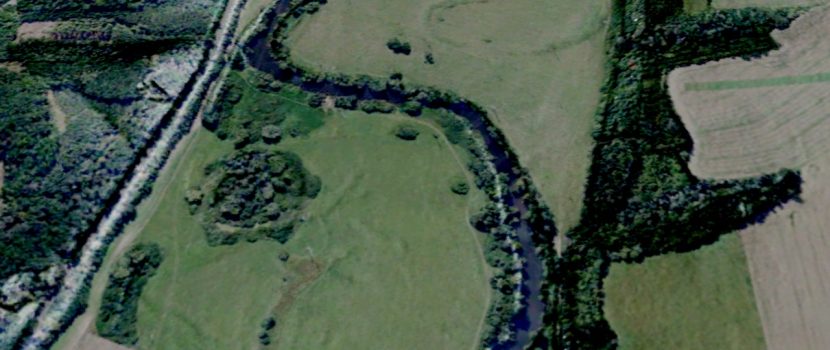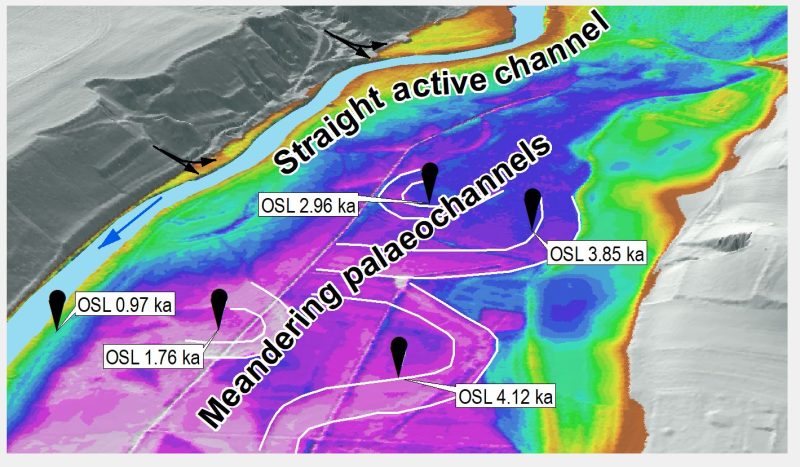
The Jizera River change from the Late Holocene to the Present
Man has always needed water for his life and therefore settled near rivers. They have not only used the water resources, but have also changed them according to their needs. Old maps and aerial photographs show how rivers have changed their course over time and whether this was a natural process or human intervention. By combining geo-information, geophysical and geochemical techniques, we are able to find not only historical channels but also palaeochannels, often thousands of years old.
The Jizera River is a typical Central European watercourse, meandering in some places, elsewhere with a deeply incised straight channel in others, and the remains of abandoned meanders in its floodplain. The aim of this work was to date and explain the change of the channel from a meandering to a straight channel. We studied a section of the lower reaches of the river using a Digital Terrain Model (DTM) and historic maps from the 1840s. In addition to the DTM, we used geophysical imaging (ground penetrating radar, GPR), sediment lithology and anthropogenic contamination, and optically stimulated luminescence (OSL) dating to describe the floodplain architecture.
We describe the behaviour of this river between 1.2 and 4 thousand years ago, during most of the late Holocene when the river meandered. At that time, the Jizera River had a laterally shifting channel, but with only a low intensity of sediment deposition, although parts of the basin are covered with easily erodible loess. As a result, remnants of 100–200 m wide palaeomeanders and palaeochannel belts have been preserved in the floodplain (the width of the floodplain is 300–600 m), which may be recognisable on the terrain model and in the subsurface GPR images.
The present straight channel was then formed about 1200 years ago. This timing suggests climatic rather than anthropogenic influence, which was less intense at the time. The return of the river to meandering was then probably prevented by a combination of low river activity and the construction of weirs, which reduced the energy of the flow.
Link to the article: Elznicová, J.; Kiss, T.; von Suchodoletz, H.; Bartyik, T.; Sipos, G.; Lenďáková, Z.; Fačevicová, K.; Pavlů, I.; Kovárník, J.; Matys Grygar, T. (2023) Was the termination of the Jizera River meandering during the Late Holocene caused by anthropogenic or climatic forcing? Earth Surface Processes and Landforms, 48( 4), 669– 686.

